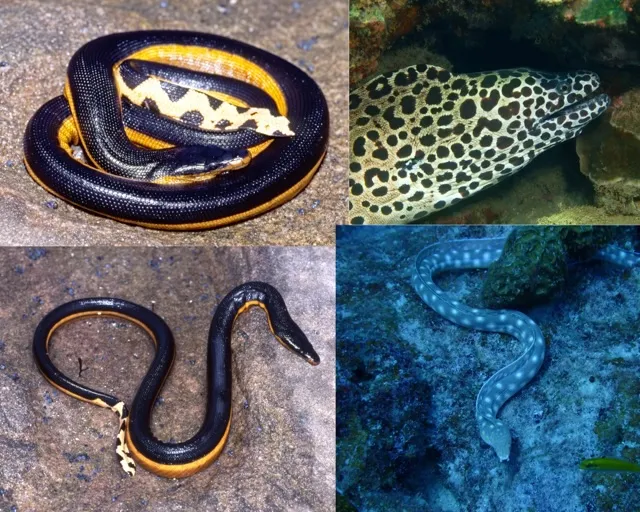
One of the most common snake sightings that I hear about goes something like this: “I saw a sea snake on the reef today.” Although this is possible, there is a lot more to it, so let’s get into identifying sea snakes.
First of all, sea snakes are rare around here, and they are not permanent inhabitants of our reefs. They are more appropriately considered guests, and they like to keep moving. I would estimate that 80% of “sea snake” sightings are not snake sightings at all, but rather one of the resident eel species. I have lived here for over two years and have never seen a sea snake myself.
Eels are diverse and interesting fish, and come in a variety of shapes and colors, from Green Morays to Garden Eels. A great resource for identifying eels is resident William Ihne’s video, Eight Eels of Baja.
Complicating matters, some eels are called “snakes” like Tiger Reef Snakes, even though they are actually fish. The only sea snake in this area is the Pelagic Sea Snake, which is a striking yellow-bellied black-backed snake known for its fascinating lifestyle of living out at sea. Sea snakes are dangerously venomous and should be given space, though they are quite docile and unlikely to bite.
One telltale sign of a sea snake is the tail (no pun intended). The black and the yellow of the body overlap into a mottled sort of look, and the tail is flattened to aid in swimming. As far as I know, there aren’t any eels with a similar pattern of black and yellow on the tail.
Another way to tell the difference between a sea snake and an eel is by the head. An eel’s head is usually a bit smaller than its neck, and the back of its head is less well-defined. Eels are also quite happy to open their mouths in warning.
Although rare, one time when sea snakes may be observed is when they wash up on the beach. They are very sluggish on land, but still should be given space, even when they look dead.
Hopefully William’s great video and this column can help you tell fish from reptile! chancestevens123@icloud.com